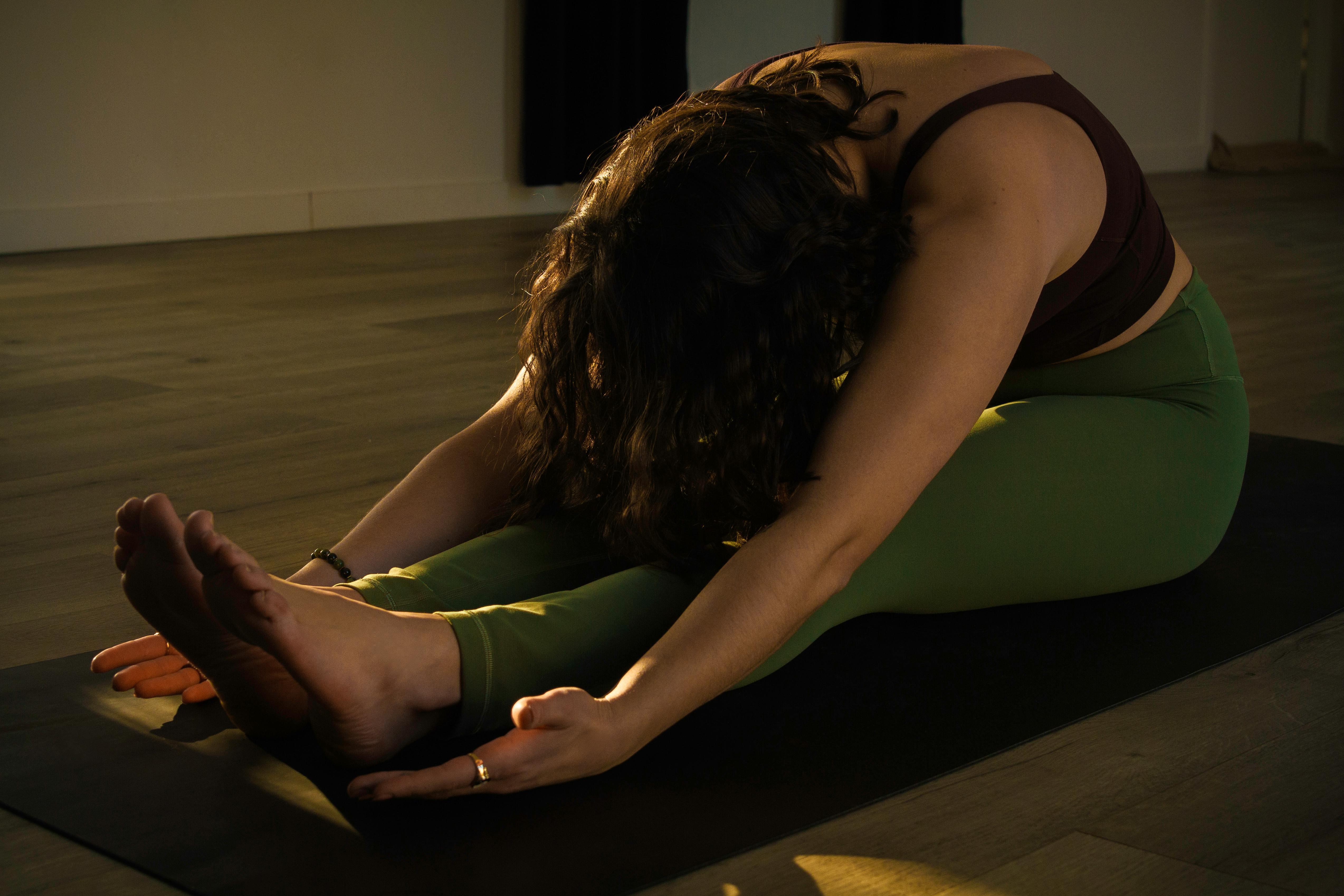Search for yoga retreats
Discover yoga retreats, holidays, and courses from worldwide.
Are you a yoga enthusiast seeking a path to deep relaxation and rejuvenation? Consider exploring restorative yoga or embarking on a restorative yoga retreat, a practice designed to be the epitome of peace, calm, and inner peace. This gentle form of yoga offers a magical sense of release, teaching valuable life lessons while guiding you towards complete physical and mental restoration. Whether you're a seasoned yogi or a complete beginner, restorative yoga welcomes you with open arms, fostering self-discovery through supported postures and mindful breathing.
A Restorative Journey: Understanding the Practice

Restorative yoga is a deeply meditative practice that prioritizes slowing down and facilitating deep healing within the body. Unlike its more active counterparts, restorative yoga focuses on creating a sense of ease and comfort. Inspired by the teachings of B.K.S. Iyengar, this practice modifies traditional yoga poses to be less challenging and more supportive. A typical restorative yoga session incorporates six to seven poses, each held for extended periods of five to ten minutes. This extended hold allows the body to completely surrender and release tension, ultimately encouraging the nervous system to transition from a state of stress to one of relaxation.
Restorative yoga frequently involves gentle twisting movements, seated forward folds, hip stretches, shoulder openers, and supported backbends. By gently targeting the body's connective tissues, these poses effectively release accumulated muscle tension, improve mobility and flexibility, and cultivate a sense of ease throughout the body. It's important to differentiate between discomfort and pain – if you experience sharp pain, adjust the pose with props. However, learning to breathe through slight discomfort is a key element of achieving deep relaxation in restorative yoga.
Essential Props for an Optimal Restorative Experience
Props are the magic ingredients that truly elevate a restorative yoga practice. They create a supportive haven, enabling the body to fully relax and melt into each pose. Essential props include bolsters, pillows, blankets, yoga blocks, straps, and eye pillows. These props play a crucial role in relieving the muscles from the burden of supporting the body, allowing you to fully reap the benefits of each pose. Don't be discouraged if you lack specific props – get creative! A rolled-up towel or a stack of books can serve as substitutes for bolsters, and blankets can be folded to create makeshift blocks.
The Profound Benefits of Restorative Yoga
In today's fast-paced world, restorative yoga offers a much-needed sanctuary for slowing down and prioritizing self-care. This practice allows you to enter a state of "not-doing," a state that is surprisingly powerful in promoting healing. Yoga teacher training can provide you with the knowledge and skills to not only deepen your own practice but also guide others on their journey towards restorative yoga's profound benefits. Here are just a few of the many benefits you can experience through restorative yoga:
- Activation of the Parasympathetic Nervous System: Restorative yoga poses stimulate the parasympathetic nervous system, promoting the body's relaxation response. This counteracts the "fight-or-flight" response triggered by the sympathetic nervous system, leading to a calming effect on the nerves, a slower heart rate, and improved blood flow.
- Enhanced Mind-Body Awareness: As you hold restorative yoga poses, your body becomes acutely aware of its physical sensations and breath. This heightened awareness fosters a deeper connection between your mind and body.
- Stress and Anxiety Reduction: Restorative yoga's calming effect on the nervous system translates to a significant reduction in stress and anxiety levels.
- Improved Sleep: By promoting relaxation and easing tension, restorative yoga can significantly improve the quality of your sleep.
- Boosted Immunity and Digestion: The stress-reducing effects of restorative yoga can positively impact the immune and digestive systems, promoting overall well-being.
- Faster Injury Recovery: Restorative yoga poses can aid in recovery from injuries by promoting gentle stretching and improved blood flow.
Restorative Yoga: A Perfect Fit for Beginners
One of the beauties of restorative yoga is its accessibility. Unlike more vigorous forms of yoga, restorative yoga is perfect for beginners. Each pose can be easily modified with props to accommodate individual comfort levels. If you're new to yoga, simply inform your instructor so they can provide personalized guidance and suggest appropriate props to enhance your practice.
Restorative vs. Yin Yoga: Understanding the Differences
While restorative yoga poses may appear similar to yin yoga poses, their intentions differ. Yin yoga poses are designed to target the body's connective tissues and fascia, often involving a degree of discomfort to create a stimulating effect and balance the body's yin and yang energies. In contrast, restorative yoga prioritizes complete relaxation and deep healing, focusing on creating a sense of ease and comfort in each pose. For beginners, restorative yoga might be a more suitable option as it emphasizes comfort and gentle stretching.
Setting the Stage for Your Restorative Yoga Practice
To fully immerse yourself in the restorative yoga experience and maximize its benefits, take a few moments to create a calming environment before your practice. Gather your props, dim the lights, and consider incorporating aromatherapy with calming essential oils like lavender or sandalwood. This preparation ritual helps you transition from your day-to-day activities and sets the intention for a deeply relaxing and restorative practice.
A Sample Restorative Yoga Sequence to Practice at Home

Ready to experience the magic of restorative yoga firsthand? Here's a restorative yoga sequence you can easily practice at home. Gather your props, put on some soothing music, and create a space for complete relaxation.
- Supported Bridge Pose (Setu Bandhasana): Lie on your back with knees bent and feet hip-width apart. Place a bolster or block under your sacrum for support. Relax your arms at your sides and hold for 10 minutes.
- Supported Forward Fold (Paschimottanasana): Sit in Staff Pose (Dandasana) with legs extended in front of you. If necessary, gently flex your knees and slide a folded blanket or pillow underneath them for added support.. Rest a bolster on your thighs and gently fold forward from your hips, keeping your spine long. Hold for 5 minutes.
- Child's Pose (Balasana): Sit back on your heels with knees hip-width apart. Place a bolster lengthwise between your thighs and rest your torso forward, draping your forehead on the bolster or the mat. Relax your arms into a comfortable position beside your body, maintaining this posture for 10 minutes..
- Revolved Abdomen Pose (Jathara Parivartanasana): Lie on your back and pull your knees towards your chest. Slowly move your knees to one side, keeping your shoulders grounded on the mat. Place a bolster or pillow under your knees for added comfort. Hold for 5 minutes per side.
- Reclined Butterfly Pose (Supta Baddha Konasana): Lie on your back with knees bent and the soles of your feet together. Support your knees with bolsters or pillows, allowing them to gently fall outwards. Relax your arms by your sides or place them on your abdomen. Hold for 10 minutes.
- Legs Up the Wall (Viparita Karani): and raise your legs to rest against it. Place a bolster or folded blanket under your lower back for support. Relax your arms comfortably beside you for the duration of 10 minutes.
- Thread the Needle Pose (Parsva Balasana): Start on all fours with your hands shoulder-width apart and knees hip-width apart. Extend your right arm forward and thread it underneath your left shoulder, resting your right cheek on the mat. Relax your hips back towards your heels and hold for 5 minutes per side.
- Supported Fish Pose (Matsyasana): Place a bolster lengthwise on your mat and lie back over it, allowing your head to gently hang off the edge. Extend your legs straight back and open your arms wide. Hold for 10 minutes.
- Frog Pose (Mandukasana): Place a folded blanket under your knees and a bolster lengthwise in front of you. Open your knees wide and gently lower your torso onto the bolster, resting your forehead on the mat or the bolster. Hold for 5 minutes.
- Pigeon Pose (Eka Pada Rajakapotasana): From all fours, bring your left knee forward and place it next to your left hand. Slide your right leg back and extend it straight. If needed, place a pillow under your left hip for support. Fold forward from your hips, resting your torso on a bolster or the mat. Hold for 5 minutes per side.
- Corpse Pose (Savasana): Lie flat on your back with your arms relaxed at your sides. Place a bolster under your knees if needed. Close your eyes and focus on deep, slow breathing. Allow your body to completely surrender and rest for 10-15 minutes.
The Power of Stillness: Embrace the Journey Towards Rejuvenation
In a world that constantly pushes us to "go, go, go," restorative yoga offers a precious opportunity to slow down, reconnect with ourselves, and prioritize self-care. This gentle practice is accessible to all, regardless of age or experience level. By incorporating restorative yoga into your routine, you'll cultivate a sense of deep relaxation, enhance your flexibility, and experience a profound sense of well-being. So, embrace the stillness, embark on your restorative yoga journey, and allow yourself to truly unwind and rejuvenate.
Yoga retreats offer a transformative environment to fully dedicate yourself to restorative yoga. Imagine practicing under clear skies or by the ocean, surrounded by a supportive community. Deepen your practice, unplug from daily distractions, and return home completely rejuvenated.
Craving More Stories?
Join our ShopYogaRetreats newsletter for the latest updates on thrilling
destinations and inspirational tales, delivered straight to your inbox!
We value your privacy. Your email address will never be shared or published.
 English
English Deutsch
Deutsch Français
Français Nederlands
Nederlands Español
Español

